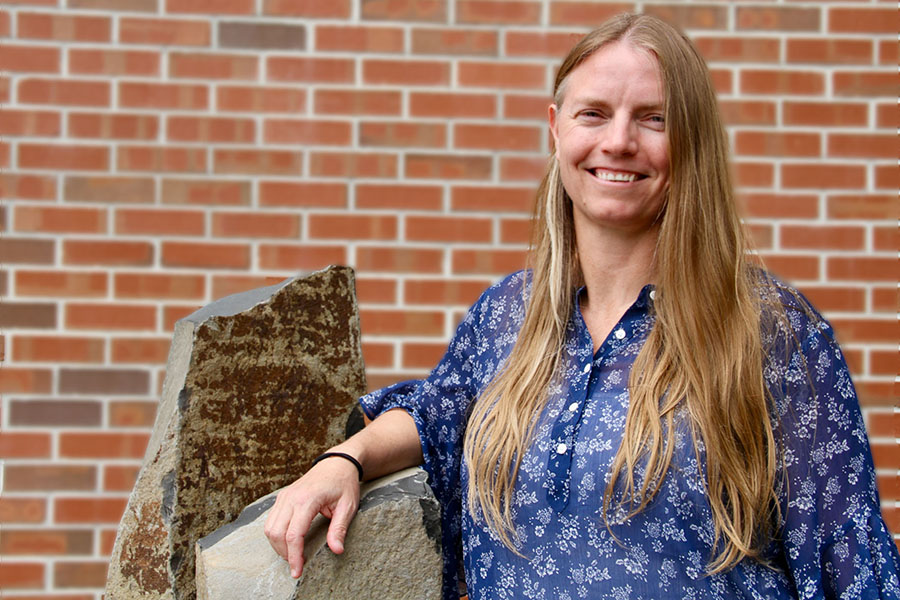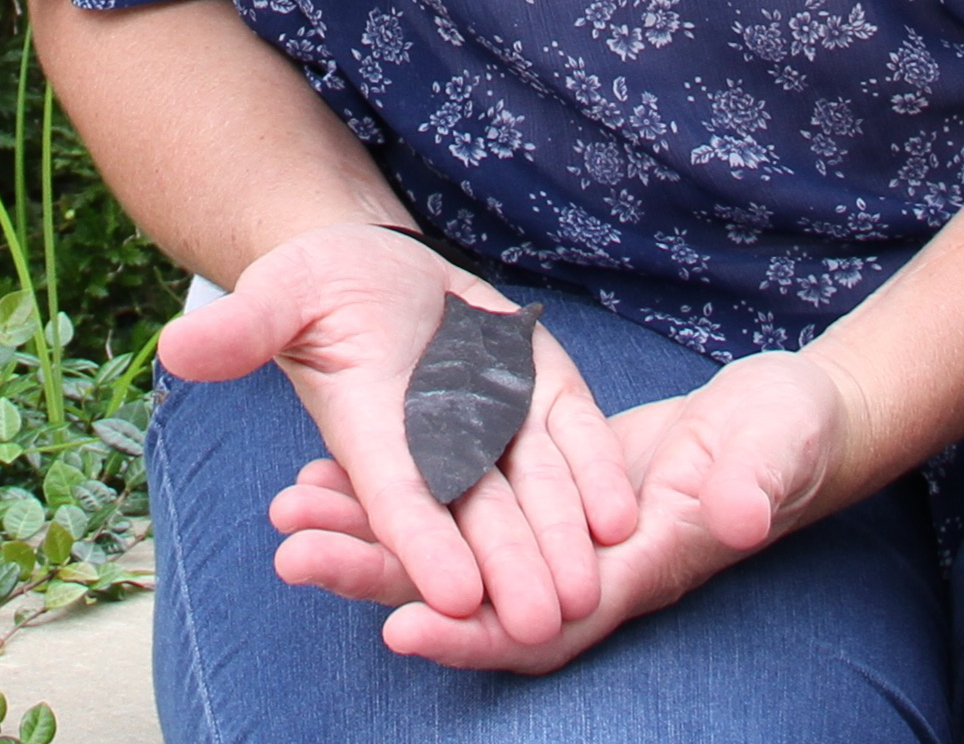FSU archaeologist awarded NSF grant to research ancient peoples’ adaption to environmental change

An underwater archaeologist might conjure up the image of a deep-sea diver looking for buried treasure. But for Florida State University Assistant Professor of Anthropology Jessi Halligan, the spear tip she discovered during her field work this past summer is as good as gold.
The spear tip was discovered underwater among bones and wood that would likely not have been preserved on land because they would have dried out, succumbed to weather or been eaten by scavengers. Because of this better-preserved setting, Halligan and her team will be able to date these items and say when people were living in that area and how they adapted to the climate conditions of the period.
Halligan spent much of her summer conducting field work thanks to a nearly $250,000 grant from the National Science Foundation, which supports exploration into how ancient peoples adapted to climate change at the end of Earth’s last ice age, about 11,500 years ago.
“This grant is a huge deal,” she said. “It means my peers recognize this research as important enough to generously fund.”
Halligan’s present research focuses on how early hunting and gathering societies in the Americas adapted to the rapid environmental changes that occurred at the end of the Pleistocene era.
She and a team of graduate and undergraduate student researchers are collecting sediment samples from sinkholes in the Aucilla River basin, located southeast of Tallahassee. These samples provide more accurate and detailed evidence of the climate in those years in comparison to those taken from dry land.
“These early inhabitants had extremely resilient ways of life, and they were so good at handling change,” Halligan said. “We are trying to find out how they not only lived with the change, but how they thrived and created these really dynamic, robust societies.”

In addition to taking sediment samples, Halligan and her team are sifting through the submerged sediment to find artifacts like stone tools and animal bones that are the remains of early civilization in the Americas. The people Halligan studies witnessed the extinction of many different species and rapid sea-level rise, among other symptoms of a fast-paced change in global climate. Understanding how these people adapted to a rapidly changing world could potentially aid modern society in adapting to climate extremes.
“This research tells us a lot about how ecological systems respond to really fast climatic change, like what plants or animals can bounce back most quickly, what doesn’t bounce back at all, and how it works that way,” Halligan said. “So, it has some big implications for the modern world in which we’re experiencing the second fastest rate of climate change on record.”
This current work is inherently collaborative, Halligan said, and this is why it’s so important that the NSF grant guarantees Halligan’s student researchers will be financially supported. Halligan said that this is a significant, and somewhat unique, component to the grant that allows for continuity of research. There is also a budget within the grant to fund increased participation by undergraduate and graduate students of historically underrepresented groups in the field of submerged landscape archaeology.
“My students are an absolutely crucial part of my research — I literally could not do it without them,” Halligan said. “The money allotted for training students of historically underrepresented groups is something that will make underwater archaeology much more accessible and will hopefully make a broader impact on how and what we preserve and interpret as cultural artifacts.”
Department of Anthropology chair Tanya Peres described funding from the NSF as the “gold standard” for many of the sciences, especially archaeology.
“To receive an NSF Senior Archaeology Award means that your peers have reviewed your research proposal and found it to be transformative and have the potential to broadly impact your field,” Peres said. “Dr. Halligan’s grant shows that she has established herself as a leading scholar in the archaeology of submerged landscapes, geoarchaeology and peopling of the Americas.”

